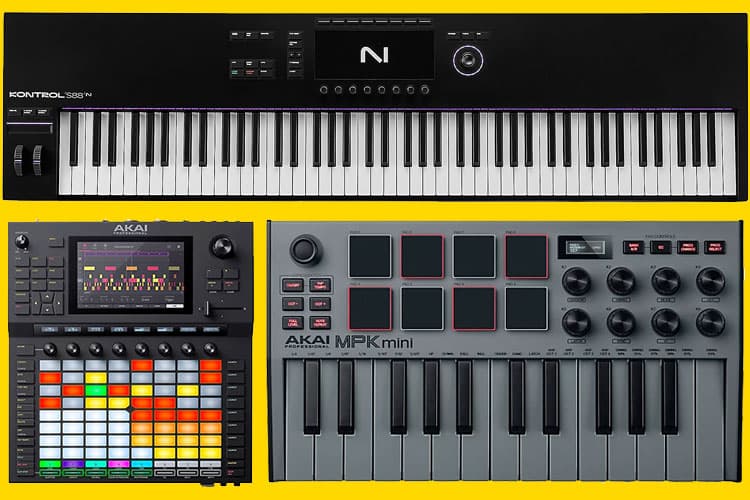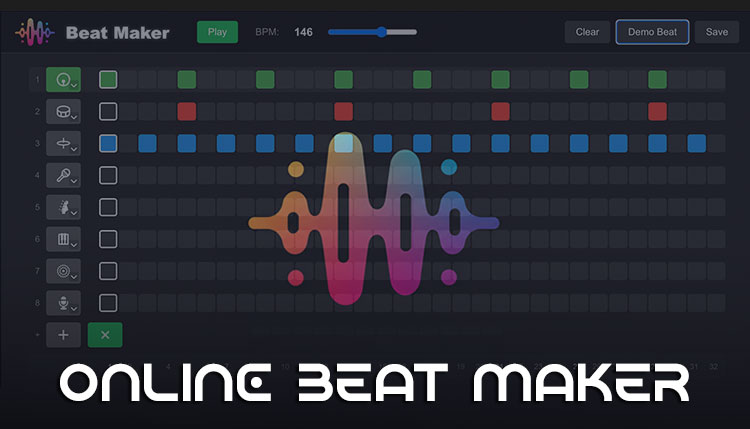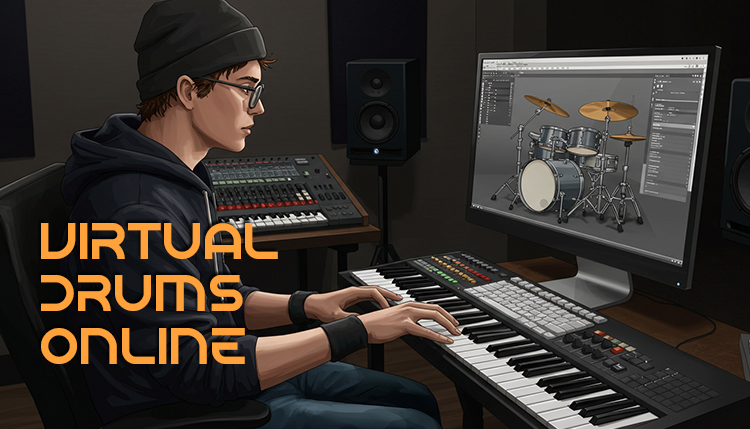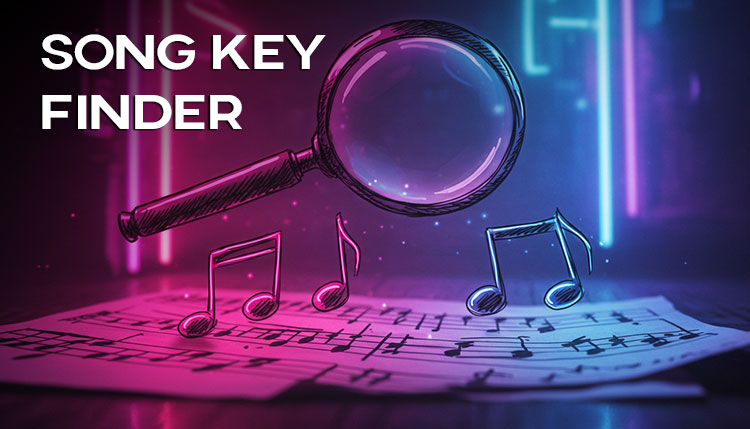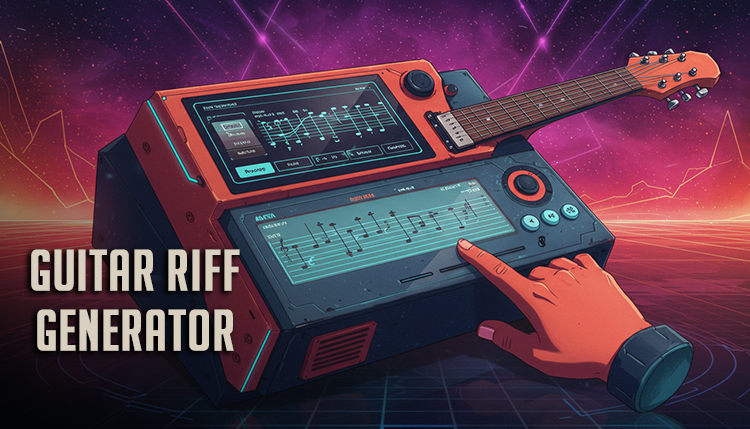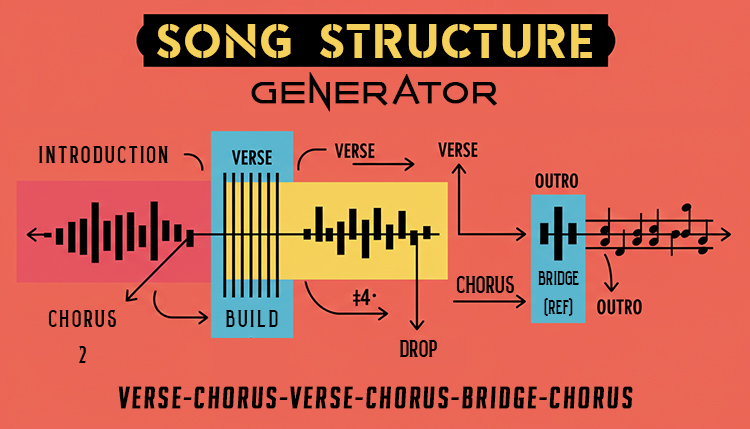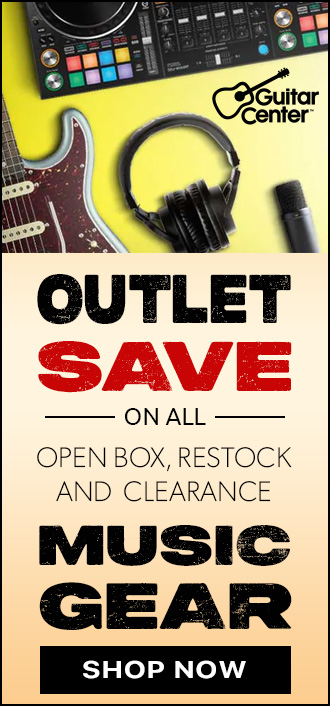Imagine having the power to shape your music with just the touch of a button or the twist of a knob! That’s exactly what a MIDI controller brings to your studio setup.
Whether you’re a seasoned pro or just learning how to produce music, understanding the ins and outs of MIDI controllers can truly revolutionize your music production process.
So, let’s dive in and explore the wonderful world of MIDI controllers!
What is a MIDI Controller?
Man, I remember when I first stumbled across a MIDI controller at a garage sale. I had no clue what it was, but it looked cool, so I bought it for like 20 bucks.
Little did I know, that impulse purchase would change my whole music production game!
So, what is a MIDI controller anyway? Well, it’s basically a device that lets you control digital instruments, music software and some of the best VST plugins, using physical buttons, keys, or pads.
It’s like a bridge between your hands and the computer. Pretty neat, huh?
The thing that sets MIDI controllers apart from other music gear is that they don’t make any sound on their own.
I learned that the hard way when I first plugged mine in and couldn’t figure out why it was silent.
Turns out, you gotta connect it to a computer or synth to make it do its thing.
It’s all about sending MIDI data – which is like a universal language for electronic instruments.
MIDI controllers have come a long way since they first hit the scene in the 80s. Back then, they were these clunky, expensive things that only pro studios could afford.
Now, you can snag a decent one for the price of a couple of pizzas. The tech has gotten way better too.
In fact, according to a study, 73% of professional music producers consider a MIDI controller an essential tool in their arsenal?
When I started out, most controllers were just basic keyboards. Now, you’ve got all sorts of wild options – touchpads, ribbon controllers, even ones that respond to your breath!
One thing that blew my mind when I first got into MIDI controllers was how versatile they are.
You can use ’em to play virtual instruments, control your DAW (that’s digital audio workstation for the newbies), tweak effects, and even control your stage lighting if you’re feeling fancy.
It’s like having a whole studio at your fingertips.
I gotta say, though, there’s definitely a learning curve. When I first tried to set up my controller with my laptop, I thought I was gonna pull my hair out.
But once you get the hang of it, it’s like riding a bike. You’ll wonder how you ever made music without one.
Oh, and here’s a pro tip I wish someone had told me when I was starting out: don’t get too hung up on having the fanciest controller out there.
A simple, well-built MIDI keyboard can take you far if you know how to use it. It’s all about creativity, not how many blinking lights your gear has.
Speaking of creativity, MIDI controllers have opened up a whole new world of possibilities for music-making.
I’ve seen folks use them to create entire symphonies, crazy electronic beats, and everything in between.
It’s pretty wild what you can do with a bunch of plastic keys and some imagination!
Types of MIDI Controllers
Alright, let’s dive into the different flavors of MIDI controllers out there. Trust me, there’s something for everyone – whether you’re a keyboard wizard or you’ve got two left hands like me.
Keyboard
First up, we’ve got the classic keyboard-style MIDI controllers. These bad boys are probably what most people think of when they hear “MIDI controller.”
They look like regular keyboards, but remember – they don’t make any sound on their own.
I started with one of these, and let me tell you, it was a game-changer for my piano skills.
Even if you’re not a keys player, having a MIDI keyboard around can be super handy for laying down basic melodies or chord progressions.
Pads
Next, we’ve got pad controllers and finger drummers. These are my personal faves.
They’re like having a bunch of little drum pads at your fingertips. Perfect for banging out beats or triggering samples.
I remember the first time I used one – I felt like a kid in a candy store, tapping away and making all sorts of crazy sounds. They’re especially great if you’re into hip-hop or electronic music.
Knobs
Then there’s fader and knob controllers. These might not look as exciting as the others, but don’t underestimate ’em! They’re super useful for mixing and tweaking parameters in real-time.
I use mine all the time for adjusting volumes, panning, and effects. It’s way more fun (and precise) than clicking and dragging with a mouse.
Specialized
Now, here’s where things get wild – wind controllers and other specialized types.
Ever seen someone playing what looks like a plastic clarinet hooked up to a computer? That’s a wind controller.
These things are crazy cool for wind instrument players who want to get into the digital world. I’ve even seen MIDI guitars, drum kits, and violins. The sky’s the limit!
One thing I’ve learned over the years is that there’s no “one size fits all” when it comes to MIDI controllers. It really depends on your style of music and how you like to work.
Some folks swear by their 88-key weighted keyboards, while others can’t live without their 16-pad drum machines.
Here’s a little breakdown of what might work best for different styles:
- For classical or jazz: A full-sized keyboard controller with weighted keys
- For hip-hop or EDM: A pad controller or finger drummer
- For mixing and production: A fader/knob controller
- For experimental stuff: Try out some of the weird specialized controllers!
I’ve gotta admit, I’ve gone through my fair share of controllers over the years. Some were great, others… not so much.
But each one taught me something new about making music. Even the crappy ones helped me figure out what I didn’t want in a controller.
Oh, and here’s a tip: don’t be afraid to mix and match! There’s no rule saying you can only use one type of controller.
I’ve got a little keyboard, a pad controller, and a fader box all hooked up to my home studio setup. It’s like having a Swiss Army knife for music production.
Remember, at the end of the day, the best MIDI controller is the one that inspires you to make music.
So don’t stress too much about getting the “perfect” one right off the bat. Start with something basic, see what you like and don’t like, and go from there.
Your perfect setup will evolve as you grow as a musician. Trust me, it’s all part of the journey!
Key Features to Look for in a MIDI Controller
Alright, let’s talk about what to look for when you’re shopping for a MIDI controller. I’ve been through the wringer with this stuff, so I’ll give you the lowdown on what really matters.
Controls
First up, you gotta think about the number and type of controls. This is where I messed up big time when I first started.
I bought this massive controller with a zillion buttons and knobs, thinking more was better. Turns out, I only used like 10% of them. Don’t be like me!
Think about what you actually need. If you’re mainly playing melodies, focus on the keys. If you’re a beat-maker, prioritize those pads. And if you’re into sound design, make sure you’ve got enough knobs and faders to tweak to your heart’s content.
Sensitivity
Next up is velocity and pressure sensitivity. This is huge, especially for keyboard players.
You want your controller to be responsive to how hard you hit the keys or pads. It makes a world of difference in terms of expressiveness.
I remember upgrading from a cheap controller to one with good sensitivity – suddenly, my piano parts sounded way more natural and dynamic.
Customization
Now, let’s talk about assignable controls and customization options. This is where things get fun.
You want a controller that lets you map those buttons and knobs to whatever you want in your software.
Trust me, being able to customize your setup to fit your workflow is a game-changer.
I’ve got mine set up so I can control all my most-used functions without ever touching the mouse. It’s like having a cockpit for your DAW!
Integration
Speaking of DAWs, integration with software is crucial. Some controllers are designed to work seamlessly with specific DAWs or plugins.
If you’re already committed to a particular software, it might be worth looking for a controller that’s tailored to it.
But don’t worry if not – most controllers these days are pretty flexible.
Connectivity
Lastly, don’t forget about connectivity options.
USB is standard these days, but if you’re planning on using your controller with hardware synths or older gear, you might want to look for one with traditional MIDI ports.
Some even have CV/Gate outputs for controlling modular synths – if you’re into that kind of thing.
Here’s a quick checklist of features to consider:
- Number of keys/pads/knobs/faders
- Key size and action (if it’s a keyboard controller)
- Velocity and pressure sensitivity
- Assignable controls
- Software integration
- Connectivity (USB, MIDI, CV/Gate)
- Portability (if you plan on traveling with it)
One thing I’ve learned is that it’s easy to get carried away with features. But remember, the most important thing is that the controller feels good to play.
I’ve had controllers with all the bells and whistles that just didn’t inspire me to make music. And I’ve had simple ones that I couldn’t put down. So if possible, try before you buy!
Pro Tip: Look for controllers with good build quality.
I learned this the hard way after my first cheap controller started falling apart after a few months.
It’s worth spending a bit more for something that’ll last.
Don’t stress too much about getting the “perfect” controller right away. Your needs will probably change as you grow as a musician.
Start with something that covers the basics and upgrade later if you need to. The most important thing is to get something that’ll get you making music!
Top MIDI Controllers of 2024
Alright, let’s dive into the cream of the crop when it comes to MIDI controllers in 2024.
I’ve been lucky enough to get my hands on quite a few of these bad boys, so I’ll give you the real deal on what’s worth your hard-earned cash.
Budget MIDI Controllers
First up, let’s talk budget-friendly options. ‘Cause let’s face it, not all of us can drop a grand on a controller.
Akai MPK Mini MK3
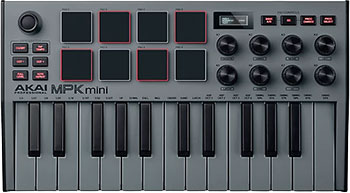
The Akai MPK Mini MK3 is still killing it in this category. It’s compact, has a bit of everything (keys, pads, knobs), and won’t break the bank. I’ve recommended this to so many people, and they all love it.
Arturia MiniLab 3
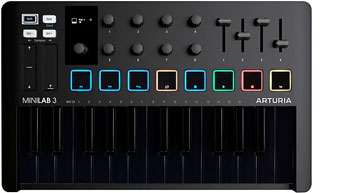
Another solid choice is the Arturia MiniLab 3. It’s got great feeling keys and comes bundled with some killer software.
High End MIDI Controllers
Now, if you’re ready to splurge on some high-end professional MIDI controllers, oh boy, do we have some treats!
Kontrol S88 MK3

The Native Instruments Kontrol S88 MK3 is an absolute beast. Those fully-weighted keys feel like a real piano, and the integration with NI’s software is chef’s kiss.
I spent way too much time playing with this at a music store once.
Akai Professional Force Music Production System
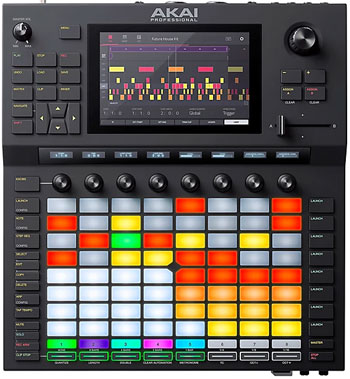
For the pad enthusiasts, the Akai Professional is a game-changer. It’s like they took everything great about MIDI Controllers and cranked it up to 11.
Unique MIDI Controllers
But here’s where things get really exciting – the innovative and unique MIDI controller designs.
ROLI Seaboard

Have you seen the ROLI Seaboard? It’s this wild, squishy keyboard that lets you bend and shape notes in ways I never thought possible. I had a chance to play one at a conference, and it blew my mind.
Touché by Expressive E

Then there’s the Touché by Expressive E. It’s this weird wooden touch-sensitive thing that’s insanely expressive. I’m still trying to wrap my head around all the ways you can use it.
Popular MIDI Controller Comparison
| Controller | Price | Pros | Cons |
|---|---|---|---|
Novation Launchkey MK3 Check it Out | $100 + | - Great for Ableton users - More keys | - Fewer pads compared to APC Key 25 |
Akai APC Key 25 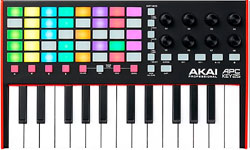 Check it Out | $99 | - Great for Ableton users - More pads | - Fewer keys compared to Launchkey MK3 |
Native Instruments Maschine MK3 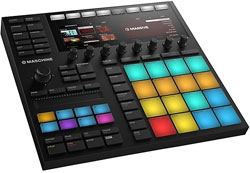 Check it Out | $599 | - Better for computer-based work - Likely good integration with NI software | - Not standalone - Requires computer connection |
Akai MPC Live II 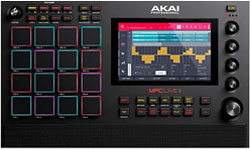 Check it Out | $1299 | - Can work standalone - More versatile for mobile production | - Possibly less integrated with computer-based workflows |
Arturia KeyLab 88 MK2  Check it Out | $999 | - Great keybed - More hands-on controls | - Possibly less integration with NI software |
Native Instruments Komplete Kontrol S88 MK3 Check it Out | $1299 | - Great keybed - Better integration with NI software | - Fewer hands-on controls compared to KeyLab |
Here’s a little secret: sometimes the best controller isn’t the newest or flashiest. I still use a 10-year-old controller for some things because it just works for me. Don’t get too caught up in having the latest and greatest.
Oh, and here’s a tip: if you’re eyeing a particular controller, check out some YouTube videos of people actually using it in their workflow. It’ll give you a much better idea of how it might fit into your setup than just reading specs.
Remember, the “best” controller is the one that works for you and your style of music-making. Don’t be afraid to go to a music store and try out a bunch of different ones. You might be surprised by what clicks with you!
Setting Up Your MIDI Controller
Alright, let’s talk about getting your shiny new MIDI controller up and running.
I remember the first time I tried to set one up – I was so excited, but man, it turned into a real headache.
Don’t worry, though. I’ve been through the struggles, so I’ll help you avoid the pitfalls.
Connect
First things first: connecting your MIDI controller to your computer or DAW.
These days, it’s usually as simple as plugging in a USB cable. But here’s a pro tip: use a good quality cable.
I learned this the hard way when my cheap cable kept disconnecting in the middle of recording sessions. Super frustrating!
If your controller has traditional MIDI ports, you might need a MIDI interface. And if you’re using an iPad or iPhone, make sure your controller is compatible and you have the right adapters.
Configure
Once you’re physically connected, it’s time to configure the MIDI settings in your software.
This is where things can get a bit tricky. Every DAW handles MIDI a little differently, but generally, you’ll need to go into your preferences or settings and make sure your controller is recognized.
Look for something like “MIDI Devices” or “MIDI Setup.” If you’re lucky, your DAW might automatically detect your controller. If not, don’t panic! It might just take a little digging in the settings.
Map
Now comes the fun part: mapping controls to parameters in your DAW or plugins.
This is where you can really customize your setup to fit your workflow.
Most modern controllers have some kind of auto-mapping feature, which is great for getting started.
But don’t be afraid to dive in and set things up exactly how you want them.
I spent a whole weekend once just mapping out the perfect setup for my favorite synth plugin.
It was tedious, but man, it was worth it in the end.
Of course, things don’t always go smoothly.
Here are some common setup issues I’ve run into and how to fix them:
- Controller not recognized: Try a different USB port, or reinstall the drivers.
- Keys or pads not responding: Check your velocity settings in both the controller and your DAW.
- Latency issues: Adjust your audio buffer size in your DAW settings.
- Controls mapped to the wrong parameters: Double-check your MIDI learn settings.
One thing that really helped me was reading the manual. I know, I know, nobody likes reading manuals. But trust me, manufacturers often include some really helpful tips and tricks that can save you a lot of headaches.
Here’s a little checklist to go through when setting up your controller:
- Connect the hardware
- Install any necessary drivers or software
- Configure MIDI settings in your DAW
- Set up any auto-mapping features
- Customize your control mappings
- Test everything out!
Remember, setting up a MIDI controller is a bit like breaking in a new pair of shoes. It might feel a bit uncomfortable at first, but once you’ve got it dialed in, it’ll feel like a natural extension of your musical self.
Oh, and don’t be afraid to experiment! I once accidentally mapped a fader to a parameter I never thought I’d use, and it ended up inspiring a whole new sound in my music. Happy accidents, right?
Creative Ways to Use MIDI Controllers in Music Production
Alright, let’s get into the fun stuff – using your MIDI controller to make some killer tunes!
I’ve picked up a few tricks over the years that have really upped my game, so I’m excited to share them with you.
Live Performance
First off, let’s talk about live performance techniques. MIDI controllers aren’t just for the studio – they can be absolute beasts on stage too.
I remember the first time I used a pad controller for live looping. It was terrifying at first, but once I got the hang of it, it felt like I had a whole band at my fingertips.
Try assigning different loops or samples to your pads and triggering them on the fly. It’s a great way to add some spontaneity to your performances.
Sound Design
Now, let’s dive into using MIDI controllers for sound design and synthesis.
This is where things get really wild. I love using knobs and faders to tweak synth parameters in real-time.
It’s like being a mad scientist, but with sound! Try mapping multiple parameters to a single control for some crazy morphing effects.
I once spent hours just messing around with filter cutoffs and resonance mapped to a XY pad. The sounds I came up with were out of this world!
Conclusion
Whew! We’ve covered a lot of ground in our journey through the world of MIDI controllers.
From understanding the basics to exploring creative applications, it’s clear that these versatile tools are indispensable for modern music production.
Whether you’re crafting beats, designing sounds, or performing live, a MIDI controller can be your secret weapon for unleashing your musical creativity.
So, what are you waiting for? It’s time to get your hands on a MIDI controller and start making some musical magic!
Remember, the only limit is your imagination. Now go forth and create something amazing!


